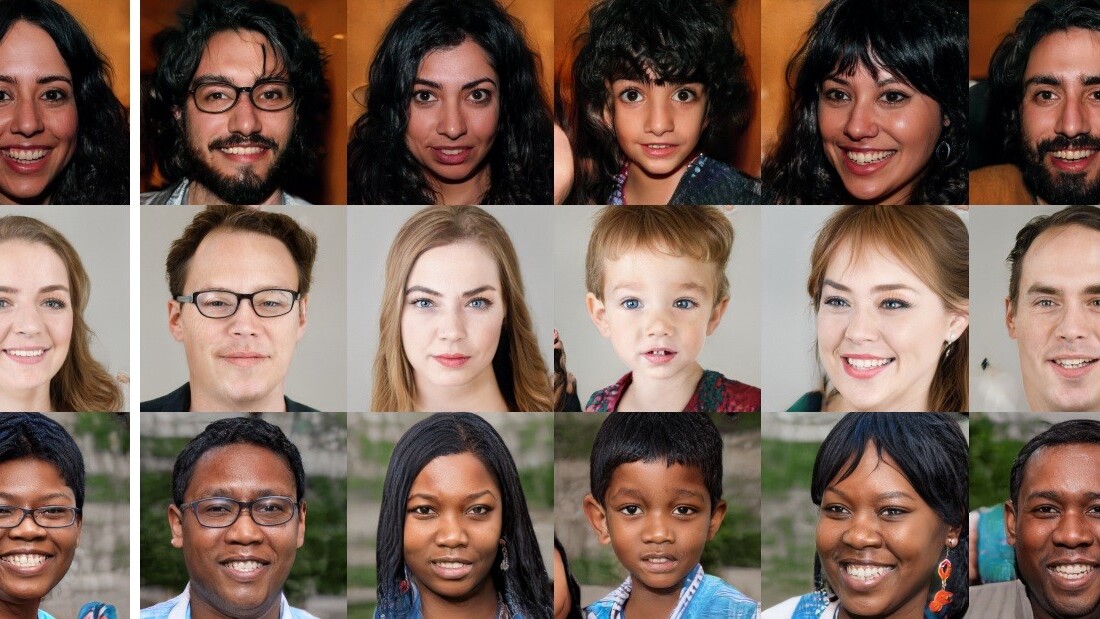
The most impressive magic trick AI’s learned in the modern era is the one where it conjures people out of thin air. And there’s no better machine learning-powered wizardry than Nvidia’s.
Nvidia is a company most lauded for its impressive graphics cards. But in the world of machine learning, it’s one of the most ingenious companies using deep learning today. A couple of years back TNW reported on a new generative adversarial network (GAN) the company developed. At the time, it was an amazing example of how powerful deep learning had become.

This was cutting edge technology barely a year ago. Today, you can use it on your phone. Just point your web browser to “thispersondoesnotexist.com” and voila: the next time your grandmother asks when you’re going to settle down with someone nice, you can conjure up a picture to show them.
A GAN is a neural network that works by splitting an AI’s workload into separate parts. One set of algorithms (a generator) tries to create something – in this case a human face – while another set (a judge) tries to determine if it’s a real image or a fake one. If the judge figures out it’s fake, we have two more weeks of AI winter.
That’s not true. Just making sure you were still with me. Actually, if the judge figures out the image is a fake the generator starts over. Once the judge is fooled, an AI developer checks out the results and determines if the algorithms need tweaking. Nvidia didn’t invent the GAN — the GANfather, Google’s Ian Goodfellow, did that. But the company sure seems to be perfecting it.
Nvidia’s recent effort – you can read the paper here – isn’t just the same old neural network with a fancy web interface. Its layers have been upgraded, tweaked, and given robot therapy to increase their self esteem (the last one’s another lie). According to the research team:
Motivated by style transfer literature, we re-design the generator architecture in a way that exposes novel ways to control the image synthesis process. Our generator starts from a learned constant input and adjusts the “style” of the image at each convolution layer based on the latent code, therefore directly controlling the strength of image features at different scales.
What that means is: you can press refresh all you want and it’s going to keep spitting out the eerily convincing faces of people who do not exist. Damn that’s creepy.
We’ll take a deep dive into the research to learn more about the future of fake people, once we’ve had a chance to hit refresh with our mouths agape a few thousand more times.
Get the TNW newsletter
Get the most important tech news in your inbox each week.










